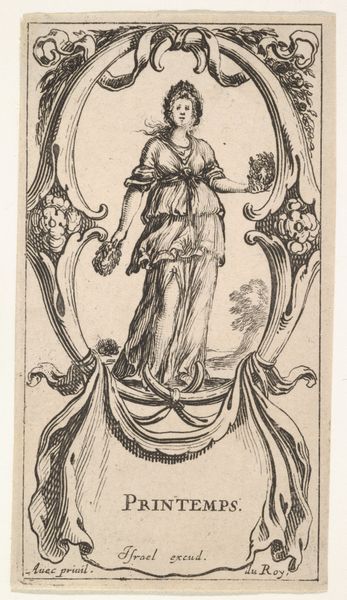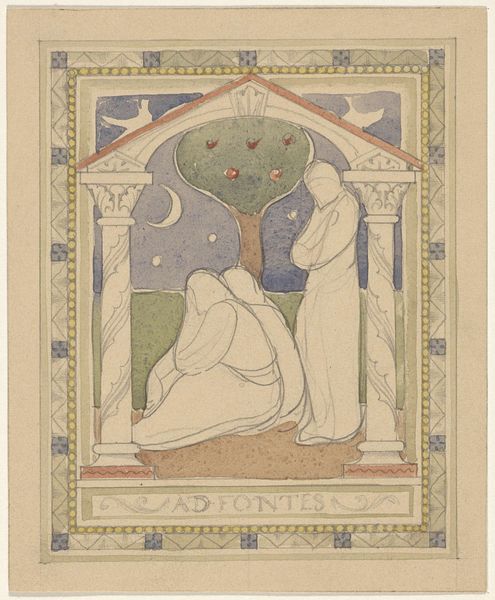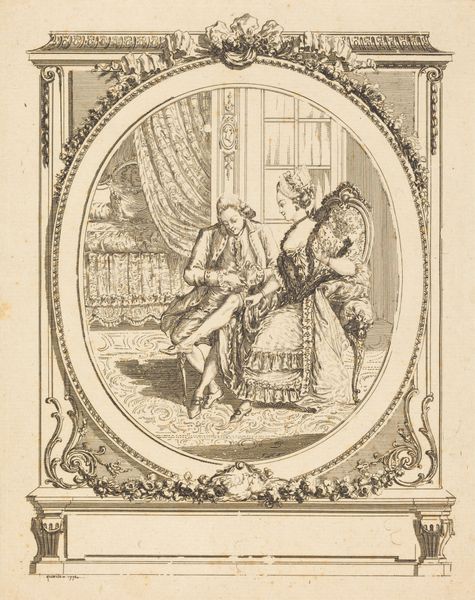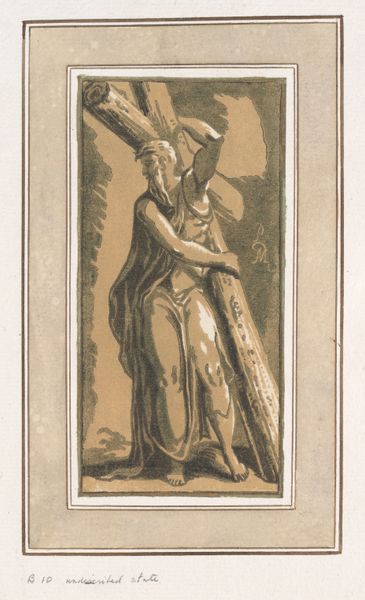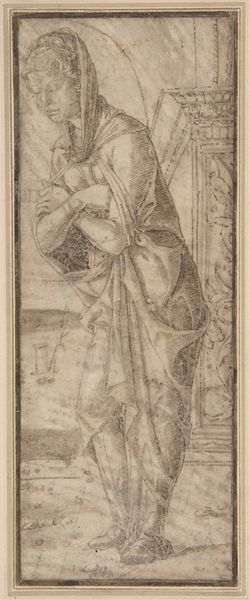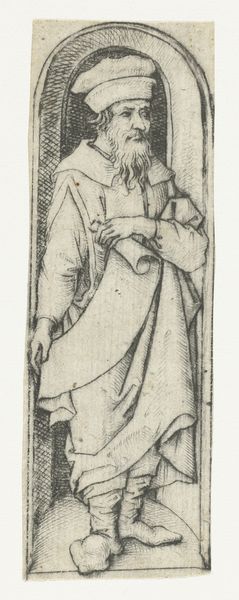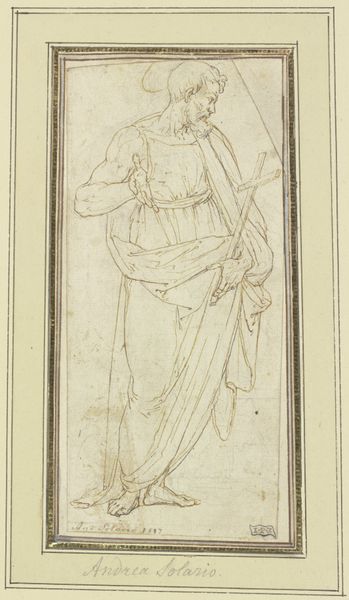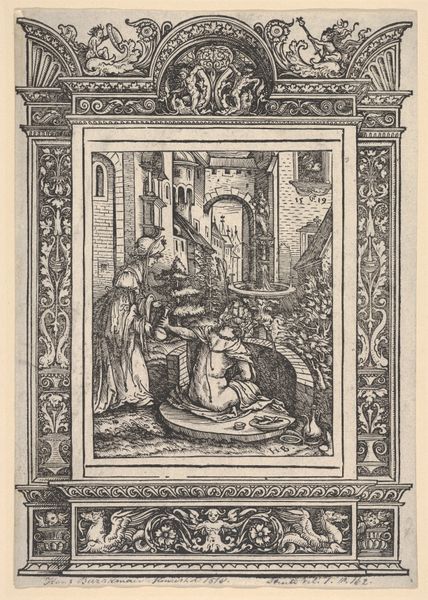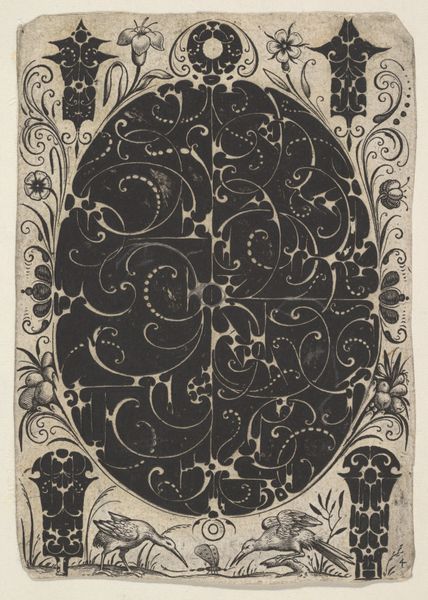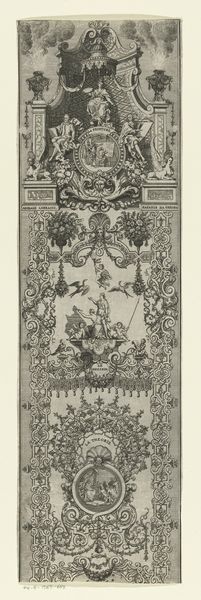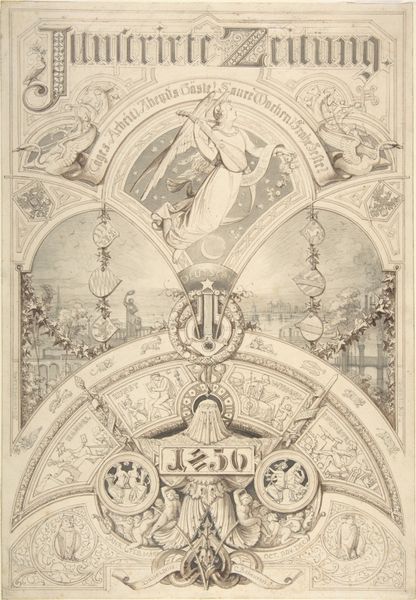
drawing, ink
#
portrait
#
drawing
#
art-nouveau
#
pen drawing
#
pen illustration
#
ink line art
#
ink
#
pen-ink sketch
#
pen work
Dimensions: height 169 mm, width 105 mm
Copyright: Rijks Museum: Open Domain
Editor: This ink drawing, "Meisje kust voor haar knielende Engelse soldaat," or "Girl Kisses her Kneeling English Soldier," by Albert Hahn, was created in 1918. I’m immediately struck by how this intimate scene is framed within such ornate, almost celebratory floral motifs. What symbols jump out at you here? Curator: The image presents a poignant juxtaposition of love and war, rendered through potent iconography. Note the kneeling soldier. Kneeling often denotes submission or reverence. Here, it's a nuanced symbol. Is it devotion to the girl, or does it perhaps subtly represent the vulnerable position of soldiers during wartime? And what of the kiss? Editor: It seems tender, but also urgent, like a farewell. Curator: Exactly. A kiss, universally understood as affection, here is tinged with the anxieties of wartime separation. Consider, too, the Art Nouveau frame. It's not merely decorative. Art Nouveau, emerging in response to industrialization, often evokes a yearning for simpler, more organic times. This drawing uses it to speak to the natural, enduring human need for love against the backdrop of mechanized war. Look at the birds interspersed in the foliage: What are they referencing, do you think? Editor: They remind me of doves, symbols of peace, scattered around a moment of human connection, like a prayer for tranquility amidst conflict. Curator: Precisely. Hahn layers symbols to speak to the complex emotions of the time. It’s a reminder of the personal amidst the political. What do you take away from the placement of the title “Sproetje”? Editor: Well, ‘Sproetje’ can mean ‘freckles’ – a reference to youthfulness, perhaps contrasting the innocence of youth with the brutal realities faced by this soldier. It creates a contrast, or dissonance, between the larger conflict and a simple love. Curator: I agree. The brilliance of such work lies in how artists like Hahn harness symbolic language to express universal emotions during times of upheaval. Editor: This close reading has really highlighted how symbols add depth to the emotion within a single moment. Thank you.
Comments
No comments
Be the first to comment and join the conversation on the ultimate creative platform.
